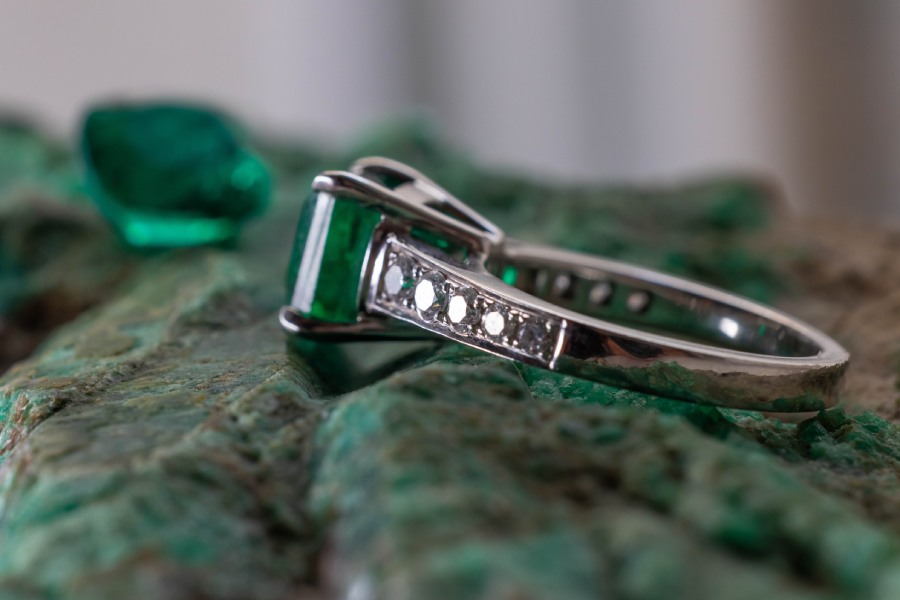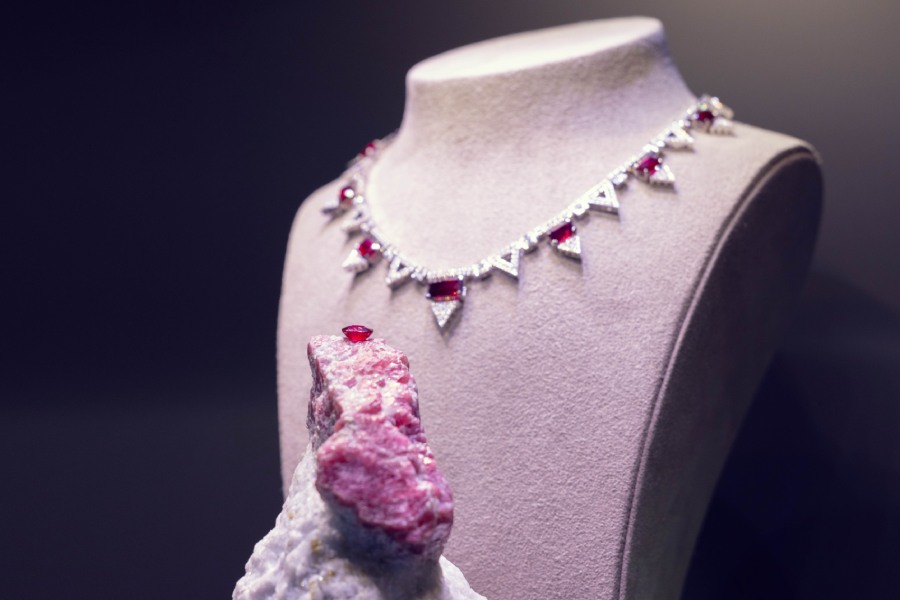Knowledge
17.11.2023 Gemstone steps: Combining minerals to create natural works of art
Gemstones are not only offered for sale as isolated specimens, but also in combination with other minerals. They are either still embedded in the rock from which they were formed or fused with other types of mineral. These so-called gemstone specimens come in a variety of sizes and designs and each one is absolutely unique. It is not for nothing that these naturally grown unique specimens are in great demand among collectors.

Gemstone specimens & mineral aggregates: Definition
In mineralogy, intergrowths of crystals or crystals grown on the original rock – the so-called “matrix” – are referred to as specimens (also mineral, crystal, matrix or gemstone specimens). A specimen consists of several free-standing crystals that are connected to form a mineral aggregate. Individual crystals are therefore not specimens.
Mineral aggregates are intergrown crystals or grains. They occur in 10 different forms, depending on the respective growth form of the crystals. Tourmaline, for example, belongs to the granular-crystalline aggregate form, stalactites form so-called flow forms and the massive (or coarse, amorphous and earthy) aggregates include opal and turquoise.
The specimens form their own aggregate form, which includes quartz in particular, but also gemstones such as calcite and amazonite. Depending on crystal development, a distinction is made between comb- or brush-shaped and tabular specimens. Crystals of the first type grow more or less parallel to each other, crystals of tabular specimens grow in two directions. Both result in unique formations whose beauty not only inspires collectors.
Steps are a mineral aggregate form of intergrown crystals or crystals grown on the matrix.

Druze and geodes

Steps form on the walls of cavities and are therefore often part of druses. These are cavities in the rock that are not completely filled with crystals. These impressive mineral formations are created from gas bubbles that cool and solidify over time. Originally, miners understood druses to be minerals whose shape resembles bumps and bulges. Today they are very popular in gemstone healing. Agate and quartz druses are particularly common, especially amethyst druses.
Druses and geodes are often used synonymously. Both are cavities (although geodes sometimes also refer to the filling of minerals), whereby druses are filled with crystals and only have a residual cavity. Geodes with a complete filling are called almonds.

Sizes of steps
Mineral collectors distinguish between five sizes of specimens:
- MM stands for “micromount” and refers to specimens that are smaller than 1.5 x 1.5 cm.
- The small specimens KS have a size of 5 to 7 cm.
- The hand step HS refers to steps that are about the size of an adult’s palm, i.e. 7 to 10 cm.
- All steps larger than HS are large steps (GS).
- Very large steps or steps of outstanding quality are called museum steps (MS). They are considered museum-worthy.


Steps: collector’s items or investment?

Crystal tips pointing in different directions, cube-like shapes and impressive color contrasts – gemstone specimens demonstrate the variety of mineral shapes and colors and thus delight the eyes of collectors and interested laymen alike. However, rough stones are not suitable as an investment. Natural, untreated colored gemstones – especially rubies, emeralds and sapphires – are recommended for an investment.

